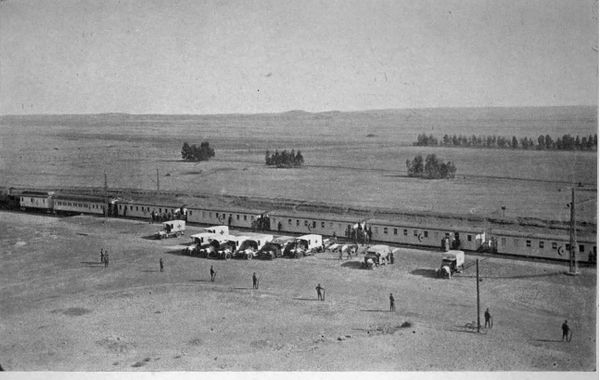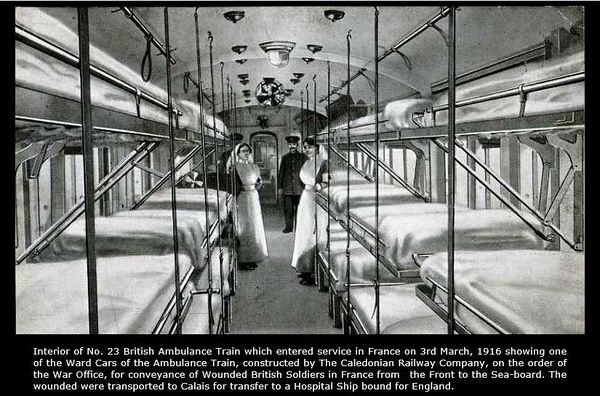Difference between revisions of "Ambulance Train"
From Our Contribution
(→Soldiers) |
(→Soldiers) |
||
| Line 49: | Line 49: | ||
===AT16=== | ===AT16=== | ||
*[[James Baillie]] 3 May 1917 | *[[James Baillie]] 3 May 1917 | ||
| − | |||
===AT21=== | ===AT21=== | ||
Revision as of 00:53, 21 November 2018
 AWM photo - Ambulance Train at Heliopolis Egypt | |
 Hospital Train No 23 in France | |
Contents
Remarks
Ambulance trains were used at various stages of medical evacuation from the front line to hospitals. They transported men away from battle as early as from advanced dressing stations. Light railways were used to transport soldiers to casualty clearing stations (CCS), which were deliberately built on railway lines for the movement of soldiers and medical supplies. Ambulance trains were then used again to move men from the CCS to base hospitals, and from the base hospitals to evacuation ports.
Once the men had arrived in Britain by ship, they were loaded onto the home ambulance trains that took them to hospital.
Their operation was the responsibility of the RAMC, and an RAMC Major was in charge of each train.
Between journeys staff sometimes waited for days or even weeks for their next load of patients. A standard ambulance train consisted of sixteen cars, which included a pharmacy car, two kitchens, a personnel car, and a brake and stores car. The eleven patient cars would usually carry about 40 patients each, 36 bed patients and four seated. Most trains feeding ships for England did so in Boulogne, with the men being landed at Dover and Southampton.
By war's end 2.7 million men had used the Ambulance Trains.
31 Trains are known to have operated on the Continent with identifying numbers that include: 1, 2, 3, 4, 5, 6, 12, 16, 21, 23, 42, 49 and 71. There were also 20 used in England with numbers that included: 14, and 34. Four of the trains were supplied and manned by Quakers and others with conscientious objections to taking lives.
Soldiers
AT1
AT2
AT3
AT4
AT5
AT6
AT12
AT14
- Albert Edward Victor Byfield 22 Sep 1917
AT16
- James Baillie 3 May 1917
AT21
AT23
AT42
AT49
AT71
Notes